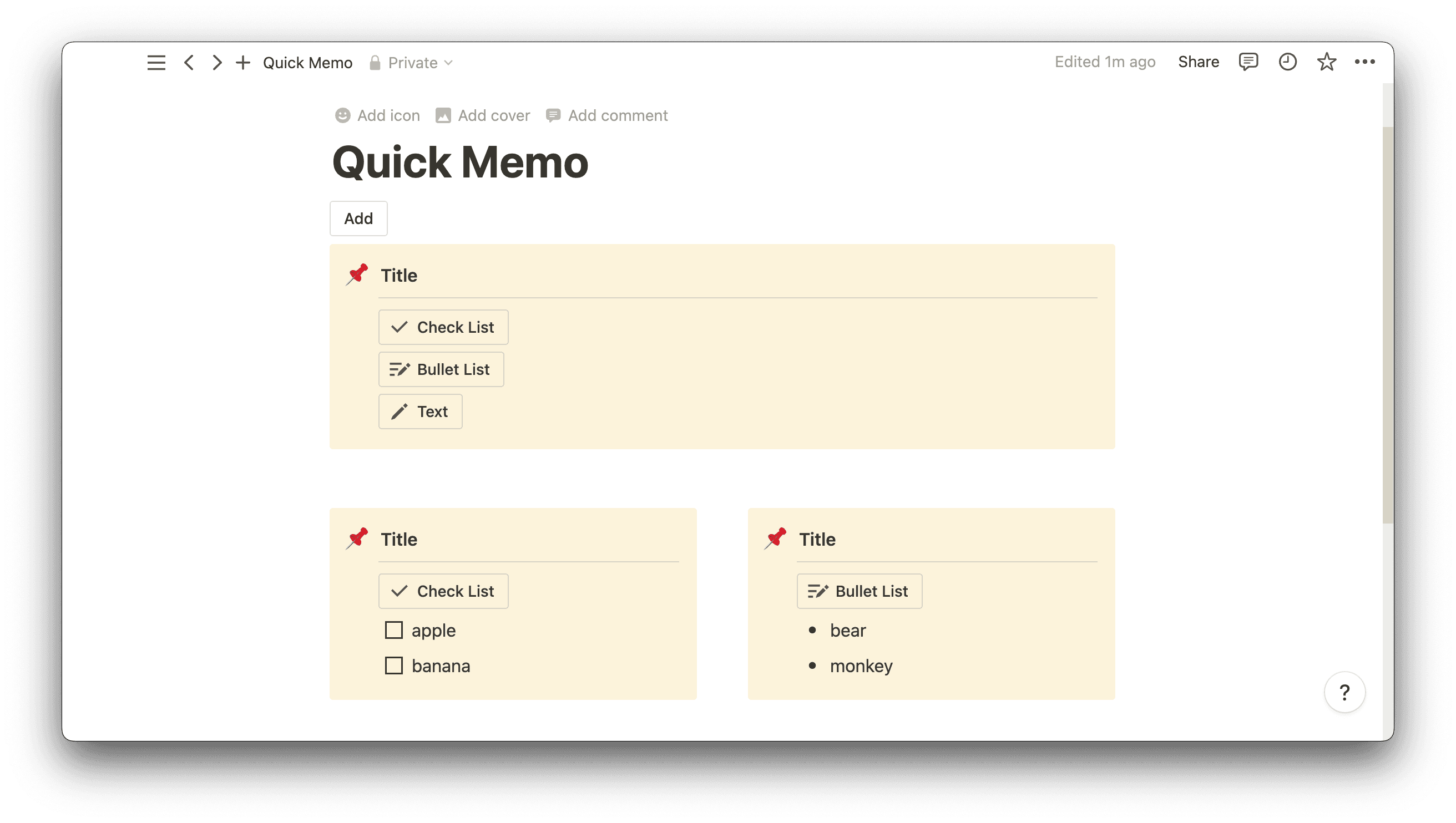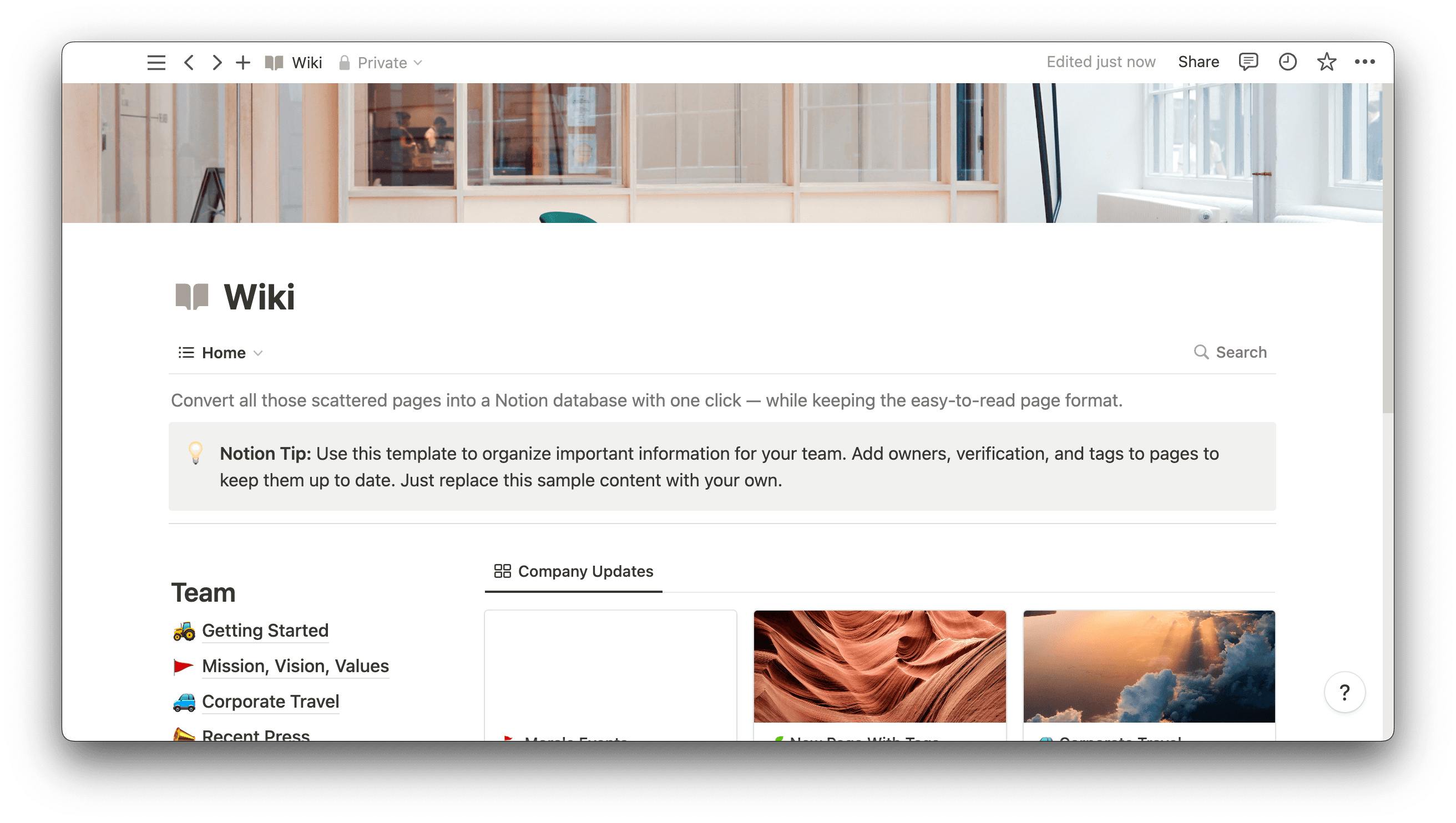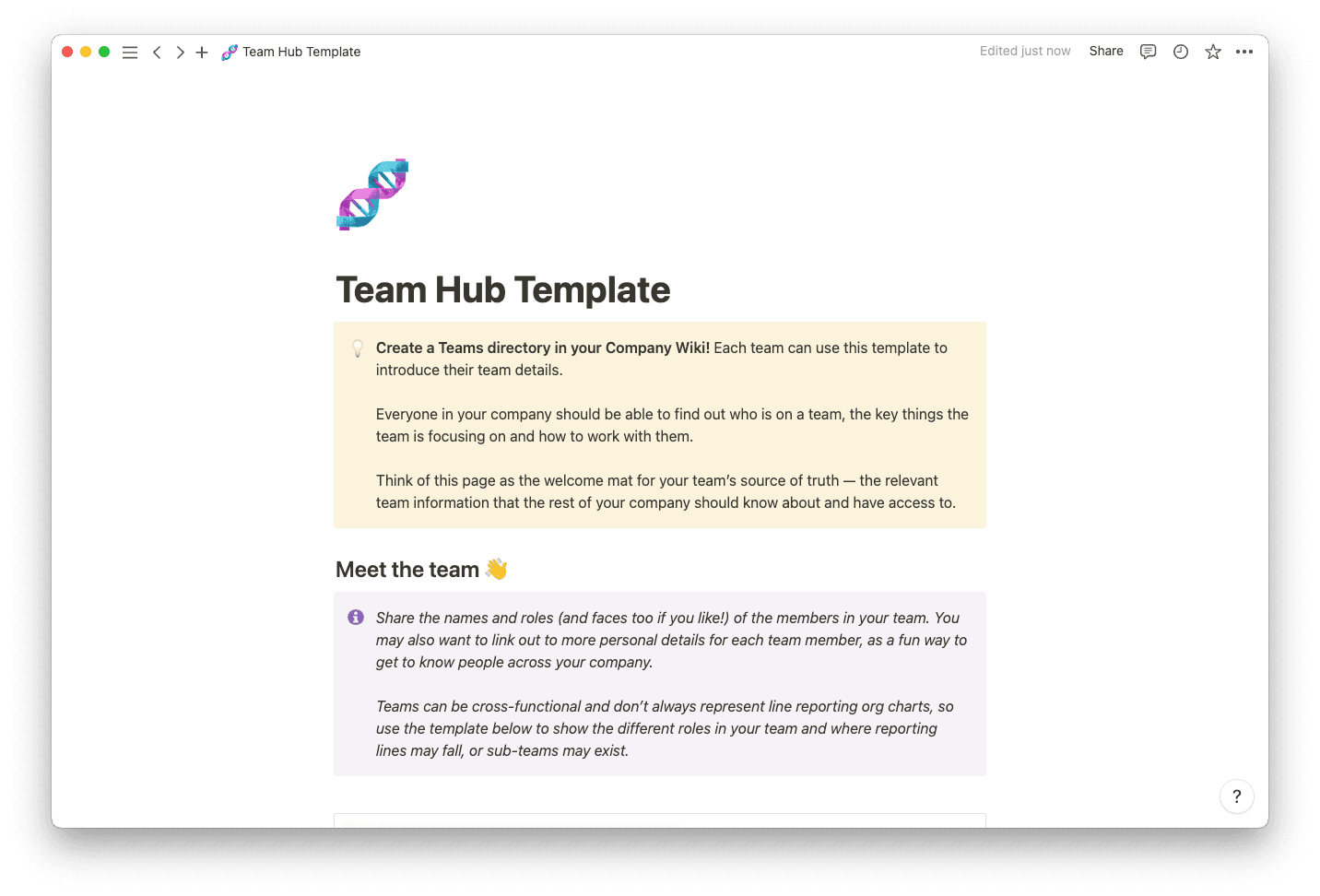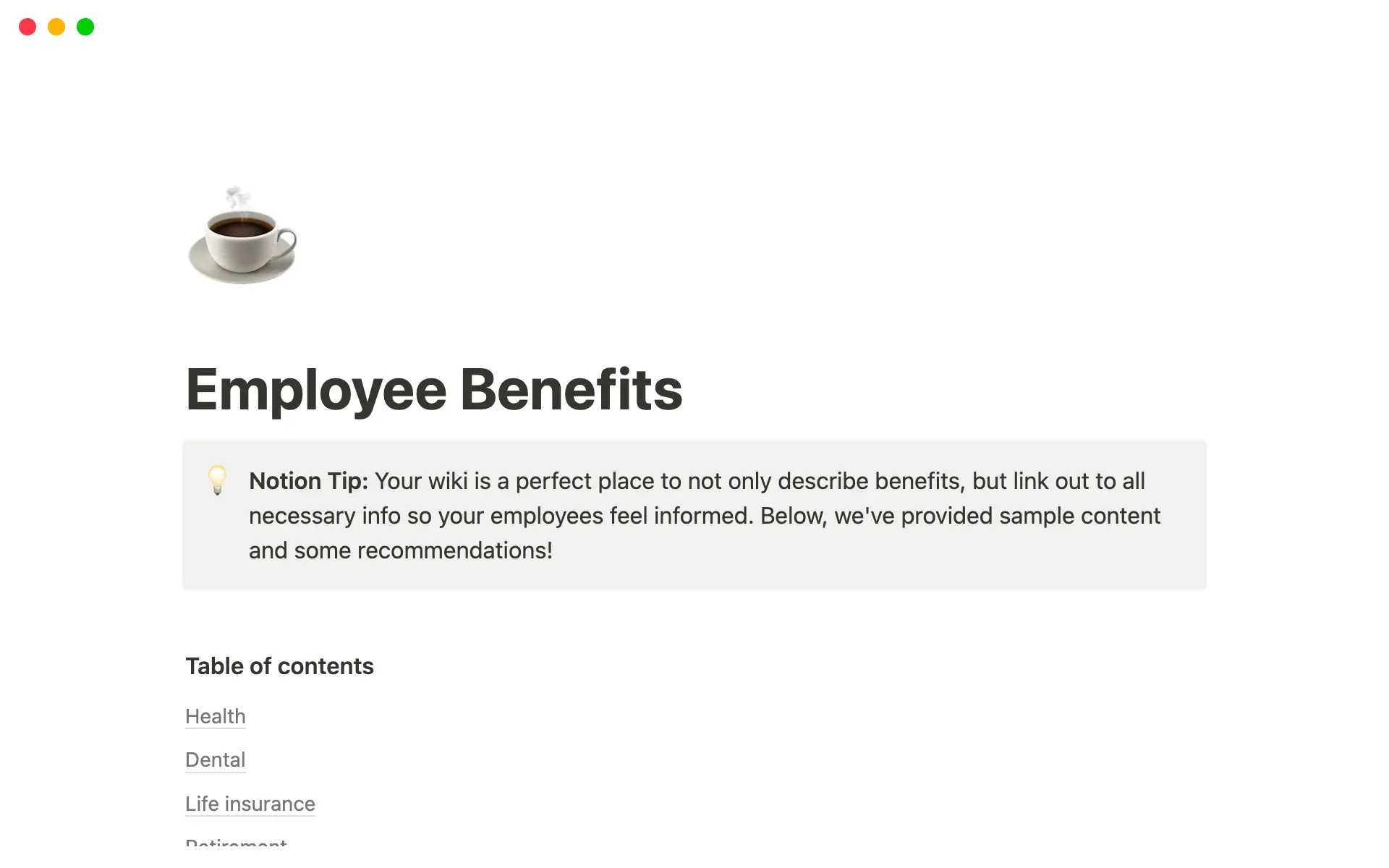Information overload is an expected — yet avoidable — part of onboarding.
With an organized and engaging company handbook (or employee handbook), new hires understand their rights and responsibilities from day one, which clears up confusion and kickstarts productivity.
And it’s not just employees who benefit from an extensive knowledge repository. A comprehensive company handbook is a major defensive document to protect organizations from potential legal disputes.
Although company handbooks have become standard texts in employer-employee communication, deciding what to include and how to structure these manuals is often challenging.
Discover what makes an effective employee handbook to help new hires feel a part of the team from the start.
What’s an employee handbook?
An employee handbook is a manual that employers write to provide a comprehensive overview of a company’s culture, policies, and procedures. Senior managers, HR representatives, and legal counsels typically collaborate on this document to ensure clarity and accuracy. New employees receive these handbooks on their first day to fully understand their responsibilities, job expectations, and the company’s history and mission statement.
Why do companies need employee handbooks?
Employee handbooks are the most efficient way to archive and communicate procedures to new employees. Beyond helping with onboarding, these documents provide many benefits for employers, including legal protections, systems for heightened efficiency, and approaches to conflict resolution. A solid handbook:
Sets clear expectations — a primary goal for employee handbooks to establish unambiguous rules and responsibilities for your employees. With straightforward standards, employees know what’s expected of them, preventing potential misunderstandings and establishing group synergy.
Ensures fair treatment — the rules of conduct in an employee handbook apply to everyone, eliminating the threat of discrimination, bias, and favoritism. This equal enforcement policy promotes a culture of fairness and fosters greater cooperation among team members.
Addresses compliance requirements — legal counsels and HR reps consistently review employee handbooks to ensure they meet compliance standards and employment laws. With an updated employee handbook, your company has a record of providing the highest legal standard to employees.
Informs employees on rights and benefits — company handbooks offer helpful information on employee benefits, including health insurance, worker’s compensation, and retirement offerings. These manuals also outline paid time off, overtime, and maternity leave policies.
Defends teams against legal issues — if a conflict erupts in the workplace, an employee handbook has the proper enforcement protocols to address the situation promptly. And legal context in employee handbooks serves as a reference for resolving potential legal disputes.
Improves employer-employee communication — handbooks are centralized and easily accessible documents, making them a fantastic knowledge base for your team. Whenever employees have questions, they can turn to their handbook for quick answers, which saves your team time and empowers new hires to be active problem-solvers.
What to include in an employee handbook
With so many topics to cover, creating a thorough employee handbook can be daunting. To get started, here are some standard features every employer should include:
Company values, mission statement, and vision — most handbooks open with a welcome message from the CEO along with company objectives and mission and vision statements. This preliminary material helps readers understand their company’s history, target audience, and market position.
Notice and Disclaimer or Acknowledgement of Receipt — include either of these sections to verify that new employees have received and reviewed the document. When employees sign these legally binding forms, they state that they understand and agree to follow company policies.
Employment status and at-will policy — define new employees as full-time, part-time, or contractors depending on their work expectations and prior contractual agreement. Although at-will isn’t the only type of employment agreement, it’s the most common in handbooks since it gives employers and employees the flexibility to terminate a contract at any time.
Equal opportunity and anti-harassment statements — promote a culture of fairness and stay in line with federal anti-discrimination laws with direct equal opportunity and anti-harassment statements. This helps employees feel comfortable in the workplace, fosters a healthy community, and protects the company and individuals from potential legal issues.
Code of Conduct — set the standards for acceptable workplace behavior with guidelines for respectful communication and cooperation between team members. Also include your company’s policies against harassment, discrimination, and bullying, including enforcement procedures.
Average work hours and time off requests — list the typical working hours as well as yearly holidays and paid time off. Include instructions for requesting benefits like paid vacation time, sick days, and maternity leave. And share eligibility requirements, legal stipulations, and calculations for demanding overtime pay.
Health benefits and insurance — outline what employees can expect from benefits like healthcare, dental, and vision insurance. Include details on retirement plans such as 401(k)s, and include investment options, contributions, and vesting schedules.
Payment — Provide details about salary agreements, frequency of payments (monthly, biweekly, or weekly), and how to set up transfers to an accepted financial institution. And include information about eligibility for unemployment compensation in the event of termination.
Confidentiality agreements — keep your trade secrets private with clear definitions for confidential information and rules so employees keep this data in-house. Consider including non-disclosure agreements (NDAs) to prevent proprietary knowledge from slipping out of your organization, and include legal clauses on confidentiality standards when employees leave the company.
How to write an employee handbook: 7 steps
Since the employee handbook is such a comprehensive document, it requires significant planning and coordination. Use tools like templates and roadmaps as you organize, develop, and update your employee handbook. And follow this seven-step guide to quickly create a solid overview.
1. Review and revise current company policies
Gather all current workplace policies in your database as a starting point of information to include. Review this existing documentation and scan for any inconsistencies or outdated protocols. Make necessary revisions across these policies so it’s easier to incorporate accurate details into your manual.
2. Outline your table of contents
Arrange the major topics you want to cover in your employee handbook with more specific subsections beneath each category. Under the “employee benefits” section, you might list separate bullet points for health insurance, retirement policies, and worker’s compensation to create structure. Arrange every topic in a cohesive list to form a working draft of your handbook’s table of contents.
3. Summarize each policy and procedure
With a preliminary outline, start filling in each policy with a summary and any crucial details. In this stage, focus on compiling accurate data rather than constructing well-polished content. The information you gather saves writers time finding and fact-checking details as they create their first drafts. Also, consider writing an employee value proposition to put yourself in the reader’s place and ensure you’re clearly addressing relevant questions.
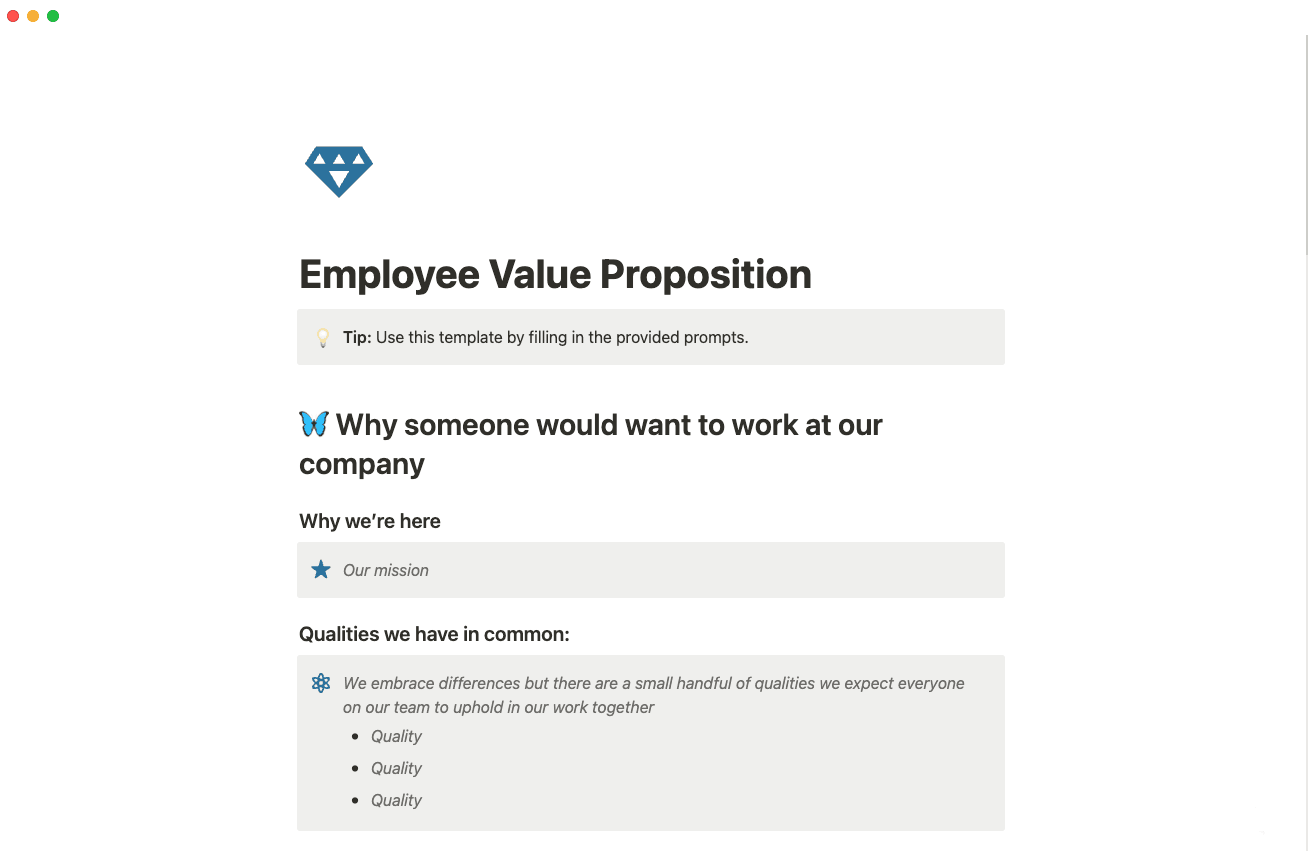
4. Review the employee handbook
With the first draft of your handbook complete, review every section to ensure the information is correct and the writing is engaging, consistent, and straightforward. Note any issues you spot and reassign writing tasks for edits. Repeat this revision process until everyone on the creation team is satisfied with the book’s quality and accuracy.
5. Provide a final version to your legal counsel
Before submitting it for publication and distributing it to team members, have your trusted attorney or legal counsel verify that this handbook meets the latest employment laws and regulations. Your attorney can also point out vague sections that need further edits to avoid misinterpretations and compromising legal situations.
6. Select a publication method and distribute
Consider the pros and cons of creating physical copies of your employee handbook or using an electronic distribution method, such as email or a central data repository. After publishing, instruct employees on how to access the information.
7. Schedule yearly follow-ups
Refresh your company handbook whenever there are major changes in employment law or your company’s policies, and review it once per year. Meet with your HR team and legal counsel to verify everything in your handbook remains relevant, and update the copy with any legal or company policy changes. If you add or revise sections in your manual, send a memo to team members and explain the rationale behind these changes.
Design your first company handbook examples with Notion templates
Make collecting and arranging data in employee handbooks less of a headache with Notion’s templates. Organize information on employee benefits, payment policies, contact details, and more with Notion’s dedicated templates and seamlessly share the documents with relevant departments. And Notion’s roadmaps and time trackers can also help visualize your workflow and ensure your handbook is ready on time.
Find out all the ways Notion gives you the tools to empower your employees.


